By Julie Pramuk, UC Master Gardener of Napa County
At this time of year, you can spot sunflowers growing in many gardens and along roadsides in Napa Valley. Sunflower stems can grow nine feet tall, producing large. stunning flowers.
These cheerful plants have been cultivated in North America for centuries, used for food, medicine, dyes and oil. By 1500, the Spanish conquistadors had exported them to the rest of the world.
Last February, when I was planting sunflower seeds in my small cold frame, my granddaughter asked if she could have some of the seeds to plant. I was delighted and told her that it would be best to start the seeds in a bright inside spot so she could see them germinate, then plant them in her sunny back yard and keep them watered.
We both transplanted our seedlings in April. Mine, although healthy, were much slower growing. I noticed that the summer sun doesn't reach my garden until about 10 a.m. I also observed that, as my sunflowers grew, the heads all faced east as if waiting for the sun to come over the hill behind our garden. Then, as the sun progressed across the sky, the sunflower heads followed the path of the sun. As I watched my sunflowers each day, I wondered why and how this flower followed the sun.
Its Latin name, Helianthus, is rooted in two Greek words: helios, meaning sun, and anthos, meaning flower. In Italian, the word for sunflower is girasole, meaning to go around the sun.
In Greek mythology, the sunflower's origin is rooted in a love story. Apollo, also known as Helios, the sun god, was admired and loved by many, including a beautiful water nymph named Clytie. Every day she would follow his path across the sky from east to west.
Sadly, Apollo never returned her affection for he was in love with Daphne, daughter of a water god. Unfortunately for Apollo, Daphne did not love him. Clytie never gave up in her love for Apollo. So she became a sunflower following the path of the sun from the moment it rises in the east until it sets in the west.
Although this is a charming story of unrequited love, there is a reason why the sunflower turns its head toward the sun. Scientists say these young plants exhibit a trait known as heliotropism, or tracking the path of the sun. The phenomenon can be explained by circadian rhythms, the behavioral changes tied to an internal clock that we humans share, which follows a roughly 24-hour cycle.
The sunflower faces east at dawn and greets the sun, then slowly turns west as the sun moves across the sky. During the night the flower slowly turns back east to repeat the cycle.
Stacey Harmer, a professor of plant biology at UC Davis, told Science magazine that this behavior was a prime example of a plant's clock modulating its growth in a way that benefits the plant.
Researchers have found that the plant's turning is a result of different sides of the stem elongating at different times of the day. Growth rates on the east side of the plant are high during the day and low at night, whereas growth rates on the west side are low during the day and higher at night. Once a sunflower is mature, the circadian clock ensures that the plant reacts more strongly to early morning light than the afternoon or evening light as it gradually stops moving westward.
Research also reveals that east-facing flowers attract five times as many pollinators because the flowers heat up faster. Bees like warm flowers. Just like people, plants rely on daily rhythms to function.
Because of the sunflower's ability to attract pollinators, the sunflower was chosen for an experiment to see how the earth's pollinators are doing. The Great Sunflower Project is a fun, interactive family project that you can access online. Join other citizen scientists in helping scientists to evaluate and improve the habitat for pollinators. When you learn that one-third of our food depends on pollinators, you realize how important they are.
The sunflower is remarkable for its history, variety of flower heads, easy cultivation and vigorous bloom from early summer through fall as well as for its important role in attracting pollinators. Like Clytie, you may find yourself falling in unconditional love with this spectacular plant.
Food Growing Forum: Join Napa County Master Gardeners on Sunday, September 27, from 3 p.m. to 4 p.m., for a free Zoom forum on “Harvesting and Storing Produce.” This forum on food growing will continue monthly on the last Sunday of every month. To receive the Zoom link for the September 27 forum, register at http://ucanr.edu/FoodGrowingForum2020.
The UC Master Gardeners of Napa County are volunteers who provide University of California research-based information on home gardening. To find out more about home gardening or upcoming programs, visit the Master Gardener website (napamg.ucanr.edu). Our office is temporarily closed but we are answering questions remotely and by email. Send your gardening questions to mastergardeners@countyofnapa.org or leave a phone message at 707-253-4143 and a Master Gardener will respond shortly.
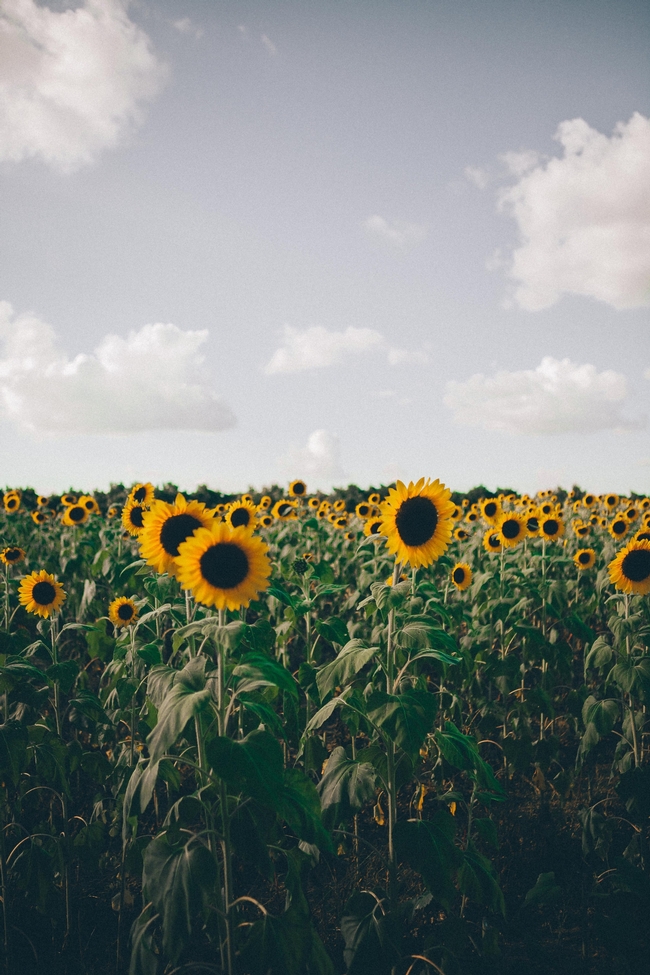
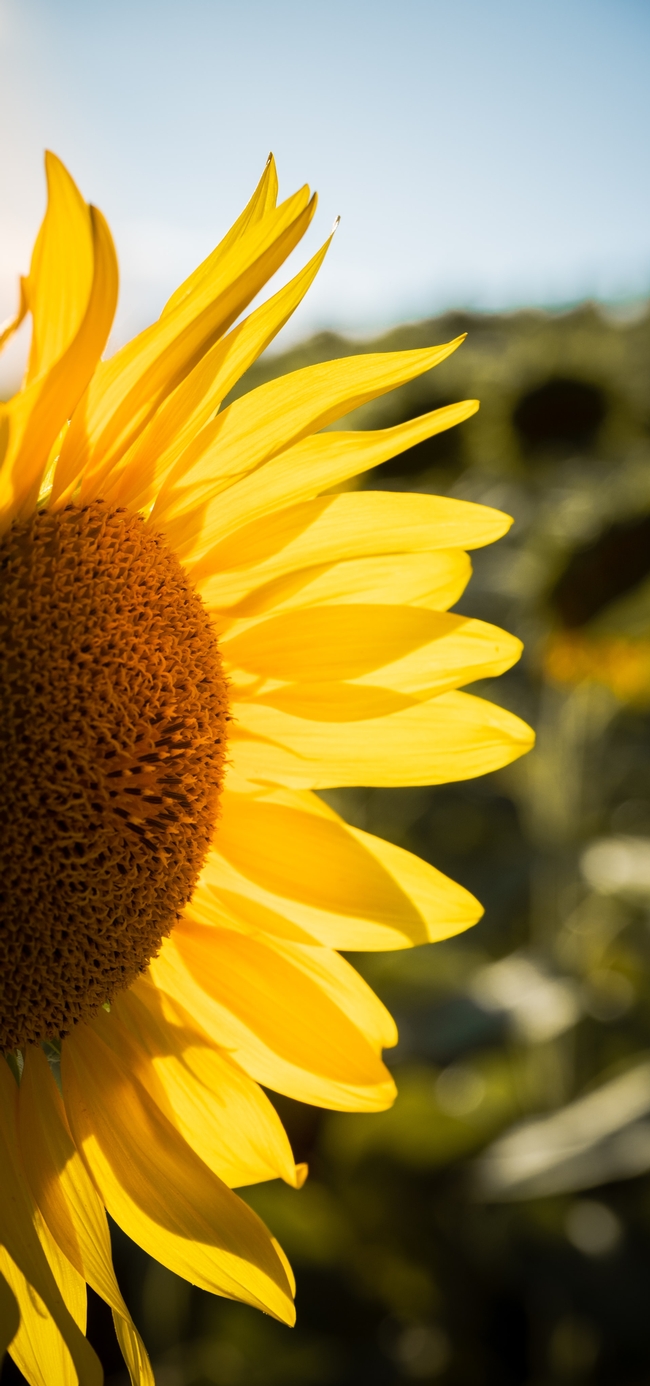
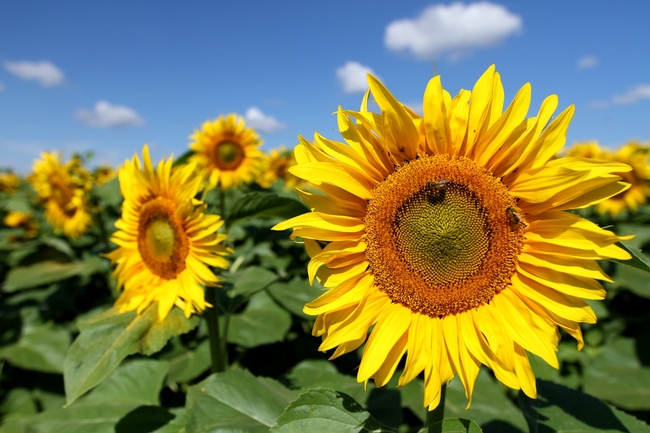
By Susanne von Rosenberg, UC Master Gardener of Napa County
Sunflowers are one of those flowers that just seem designed to bring us joy. Who can avoid smiling when we see their bright, cheery faces?
There are many other things to love about sunflowers as well. They are a great food source for bees and other pollinators. Birds, squirrels and humans appreciate the seeds. You can eat sunflower seeds raw or roasted, and you can grow tasty sunflower seed sprouts for your salads and sandwiches. If you grow taller sunflowers, they can also make a nice screen during the summer.
Annual sunflowers (Helianthus annuus) are easy to grow. You can grow them in the ground or in containers. If you plant the seeds directly in the garden, you may need to protect the seedlings from hungry critters. Cover seedlings with floating row cover or fine mesh wire cages until they are six inches high or so; humans are not the only ones who appreciate juicy sunflower seed sprouts.
You can also grow seedlings and then plant them out when they're around six inches tall, or when their stems and leaves have toughened up. To grow well, sunflowers need full sun.They grow best in fertile, well-drained soil with a lot of mulch and regular watering. Tall varieties, especially, need good soil and plenty of water.
Sunflowers come in a huge variety colors and sizes. Colors range from creamy white to dark maroon. Depending on the variety you choose, the blossoms can be less than two inches across or the size of dinner plates. They also come with primarily single or branched stems.
If you're growing sunflowers for cut flowers, look at the description to make sure that they will have stems long enough for the types of bouquets you have in mind. Shorter varieties (less than four feet tall) are better for container gardens. You can grow taller varieties in containers, but they may need support.
Many varieties grow more than six feet tall. The tallest varieties I have seen in seed catalogs are said to reach 16 feet. While yours may not grow quite that tall, they would still be very tall sunflowers. The Guinness Book of World Records says that the tallest sunflower on record was grown in 2014 and was just over 30 feet tall.
What we think of as a single sunflower is actually a large inflorescence. This means the flower head is composed of many tiny flowers called florets. Central florets look like the center of a normal flower while the outer florets look like yellow petals and together they make up a "false flower."
This design helps insects and birds to easily see the sunflower. Every little floret that is pollinated produces a seed. Sunflowers were first domesticated in the Americas, and were part of many traditional native “Three Sisters” garden designs.
You may have heard that sunflowers follow the sun. That's true for young sunflowers. At dawn the head of the flower faces east and moves west throughout the day. When sunflowers reach full maturity they no longer follow the sun and continuously face east.This eastward orientation allows the sunflower to warm up quickly in the morning and thus get more pollinator visits.
Sunflowers produce a flower within three months of germination, and seeds typically ripen 30 to 45 days later. If you want to harvest some seeds, don't wait until the flower starts to dry or the birds will likely harvest them for you.
You'll need to cover the flowers from which you want to harvest seeds before the seeds mature. (Leave some flowers uncovered for the birds.) You can look for seeds forming inside the flower head and check the underside of the flower. The underside will turn from green to yellow and then brown as the flower matures. Cover the flowers with a material that permits air circulation (such as floating row cover, fine netting or cheesecloth) as they start to turn from green to yellow and tie the covering shut several inches below the flower.
Another recommended method is to simply cut the flowers when the back turns from green to deeply yellow and then put the seed heads in a dry, warm location to cure. Harvest sunflower seeds by cutting flower heads 4 to 12 inches down the stalk. (Cut below any covering to keep the mature seeds that have already fallen out of the flower head.)
If you have the room, you can grow a sunflower “house” for your kids or grandkids. Simply plant a double row of tall sunflowers in a circle that is large enough for the kids to sit in comfortably. Remember to leave an opening for them to get into their “house.” You've just created a great shady private space for them to enjoy all summer long. You can share the joy that sunflowers bring by growing some where neighbors can see them as they pass.
The UC Master Gardeners of Napa County are volunteers who provide University of California research-based information on home gardening. To find out more about home gardening or upcoming programs, visit the Master Gardener website (napamg.ucanr.edu). Our office is temporarily closed but we are answering questions remotely and by email. Send your gardening questions to mastergardeners@countyofnapa.org or leave a phone message at 707-253-4143 and a Master Gardener will respond shortly.
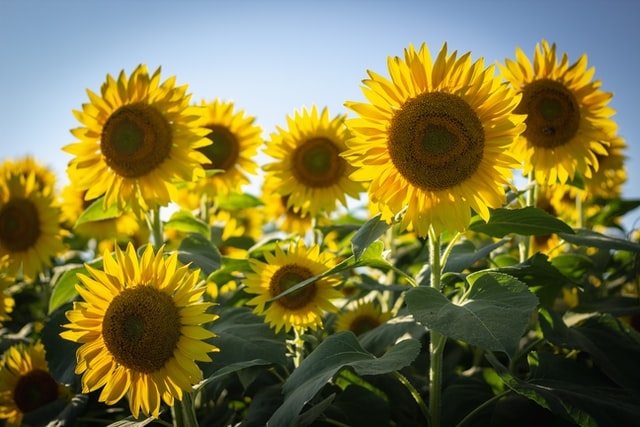
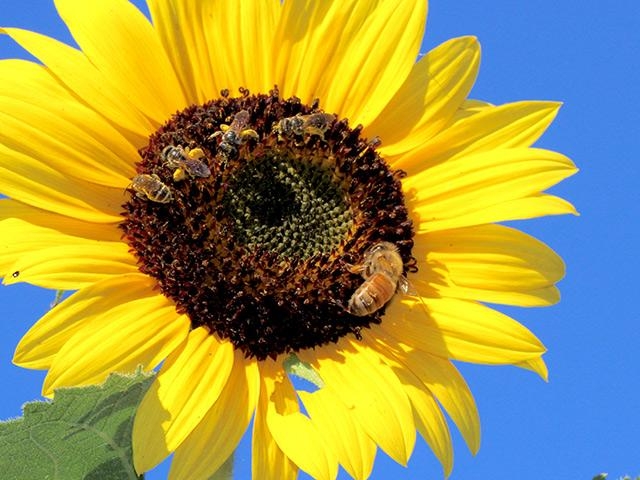
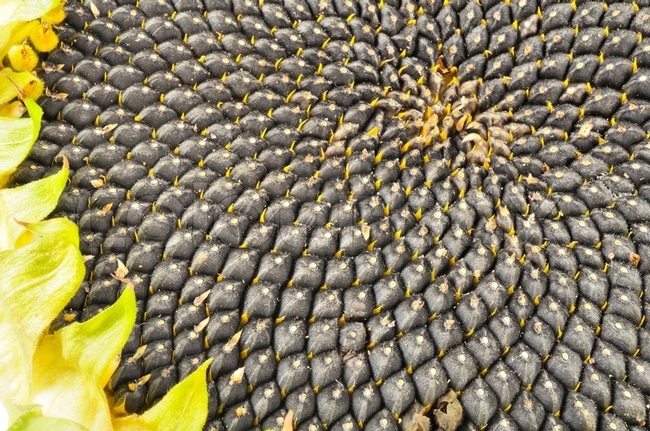
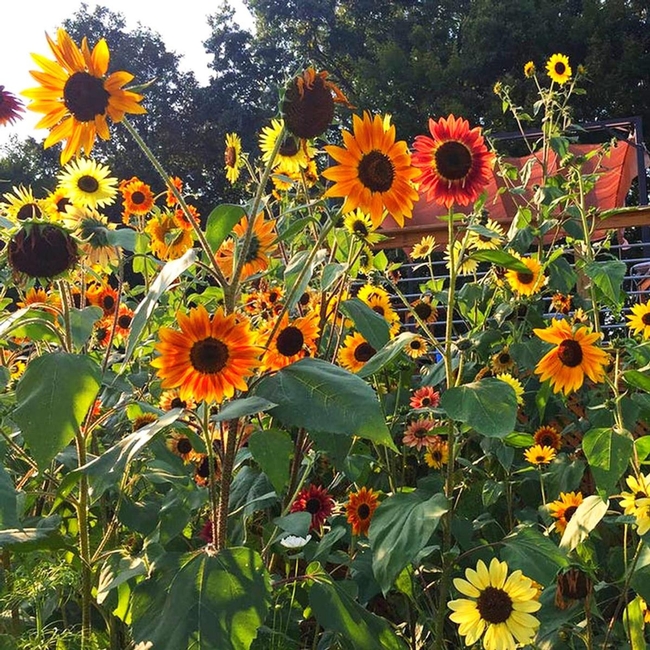
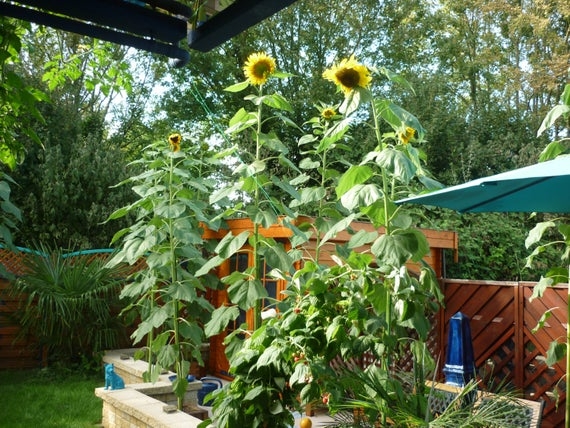

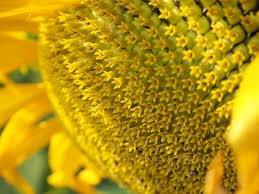
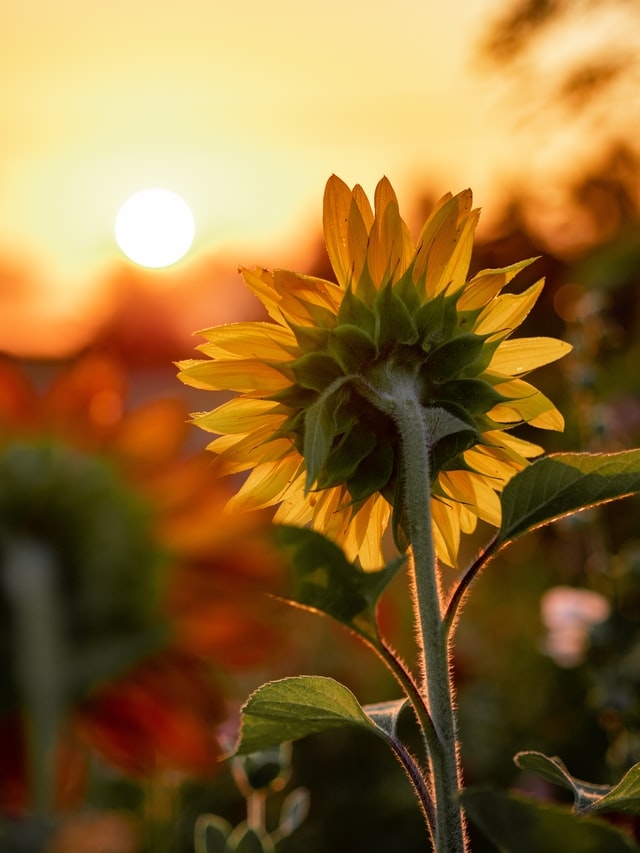

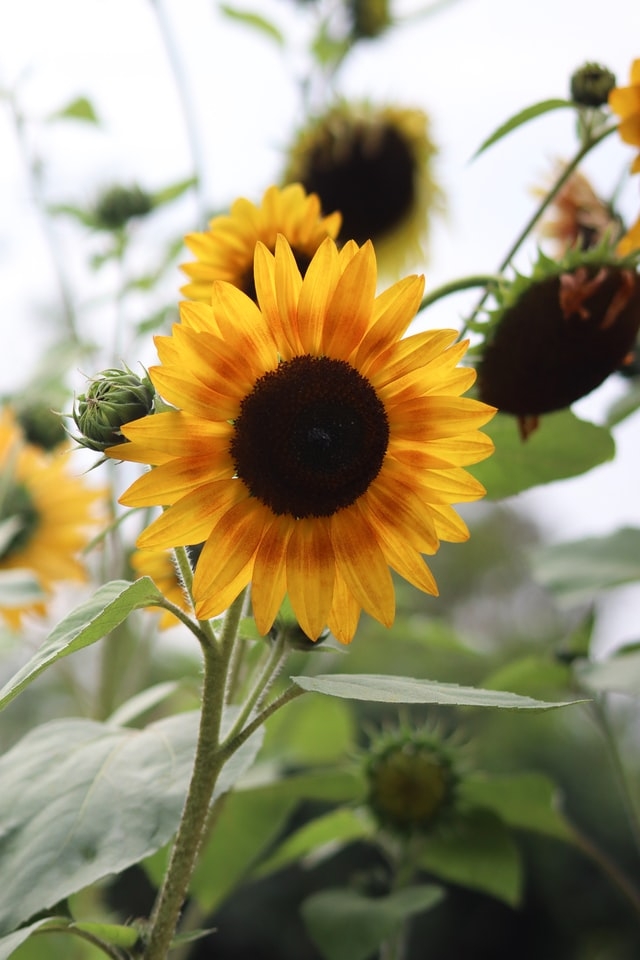
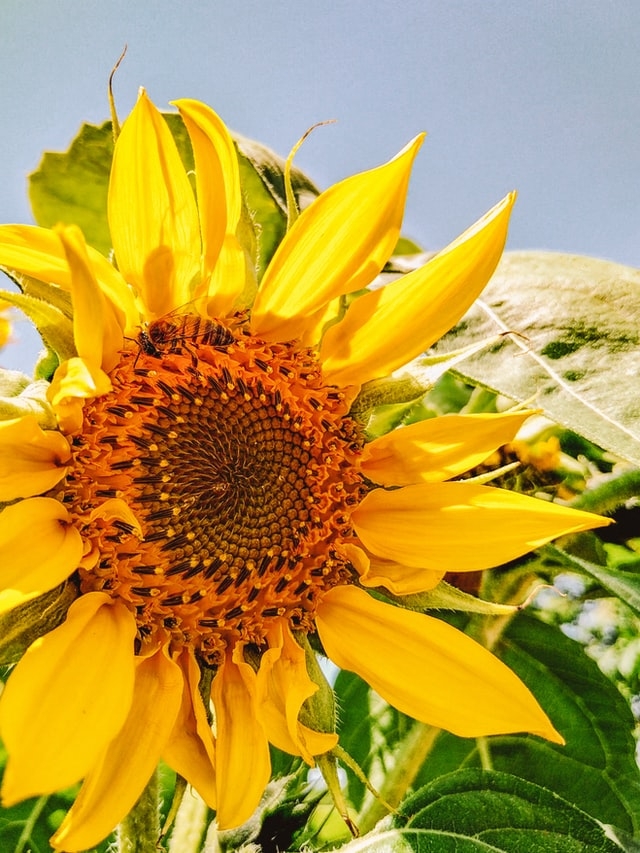
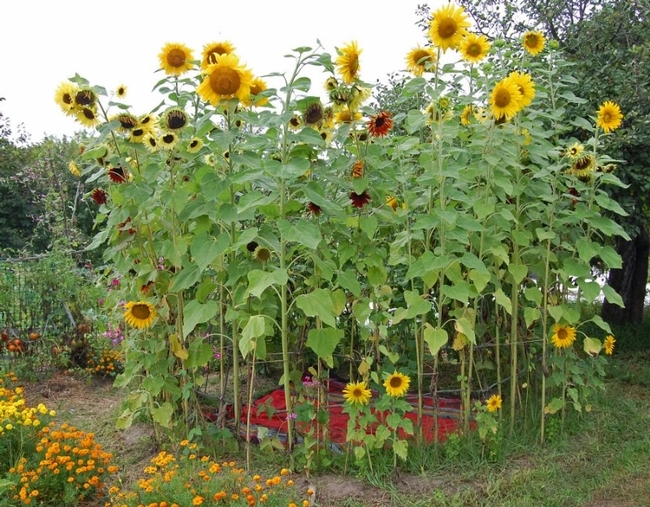
By Penny Pawl, U. C. Master Gardener of Napa County
Winter is a perfect time to start planning the pollinator garden you will create in the spring. Start by deciding just where you would like to put the garden. Some people have taken out the center of their lawn and created a space for a garden for pollinators.
Pollinators are extremely important to the global ecosystem. Without them, many people would starve because food plants would not get pollinated. You can help by making an area in your garden hospitable to them.
Last fall, I picked out an area in my garden and decided to line it with hardware cloth because gophers had started to pull down my precious milkweeds. I dug up those milkweeds, then a helper laid wire over the soil and used building blocks to hold the wire in place. Over the winter, my helper added various soils and compost to create an area where the plants would grow. Soil was added to the openings in the building blocks.
Meanwhile, I was researching the plants that bees, birds and butterflies love. These plants have to be full of nectar as some pollinators need nectar for daily food and others need it to store in their nests.
I especially wanted to add nectars that would attract bumblebees. I have always had bumblebees in summer, but for some unknown reason, they disappeared the previous July. This year, I found the queen feeding on purple salvia in October. The queen is much bigger than the workers and usually stays in the nest while the workers gather nectar.
My next step was to start buying seeds of the plants I wanted. As soon as the weather warmed a bit, I started the seedlings in my hothouse. I had learned that marigolds, zinnias and salvias were pollinator favorites. For me, there is nothing more enjoyable than settling down on a long winter night with a stack of seed catalogs. Our bees, butterflies and birds evolved with California native plants, so that's what I chose.
Once you determine where you want your pollinator garden you can start to prepare the area for planting. Add a mixture of compost and soil. Let these two elements mix over winter, giving ground worms and small insects a chance to start working. Ground worms sift the soil through their gut and make tunnels for water to move through.
I found that bumblebees especially love ‘Hot Lips' salvia from Mexico. They drill a hole in the back of the flower to get directly to the nectar. Honeybees also visit my garden because there are hives nearby and some of them nap for the night in the flowers.
Native bees are small and often nest in the ground or in holes in trees and other wood. They visit my garden often for nectar.
Monarch butterflies need native milkweed to raise new generations so I grow two or three different native milkweeds in my pollinator bed. Some milkweeds come back from the roots, so you plant once and they continue to produce.
Sunflowers are always a good choice. I experimented with a Mexican sunflower with small flowers using seeds I bought online. Birds and squirrels are especially fond of sunflowers so plant a variety. I added more flowering plants to the mix, and as the flowers formed seeds, I plucked them and saved the seed.
Before I planted anything, I had a one gallon-per-hour drip line laid in the bed. Once plants got established, I watered once a week. Native plants don't require a lot of water, so that schedule was sufficient. For fertilizer, I used sifted worm compost which has all the trace elements plants need.
Above all, make your pollinator garden your own creation, with plants that you love and that they will, too. The pollinators will be grateful.
Next workshop: “Citrus: Preserve It, Serve It” on Thursday, January 16, from 1 p.m. to 4 p.m., at the University of California Cooperative Extension, 1710 Soscol Avenue, Napa. Presented by UC Master Food Preservers. For more details and online registration call 707-253-4221 or visit http://napamg.ucanr.edu.
The UC Master Gardeners of Napa County are volunteers who provide UC research-based information on home gardening and answer your questions. To find out more about upcoming programs or to ask a garden question, visit the Master Gardener website (http://napamg.ucanr.edu) or call (707) 253-4221 between 9 a.m. and noon on Mondays, Wednesdays or Fridays.
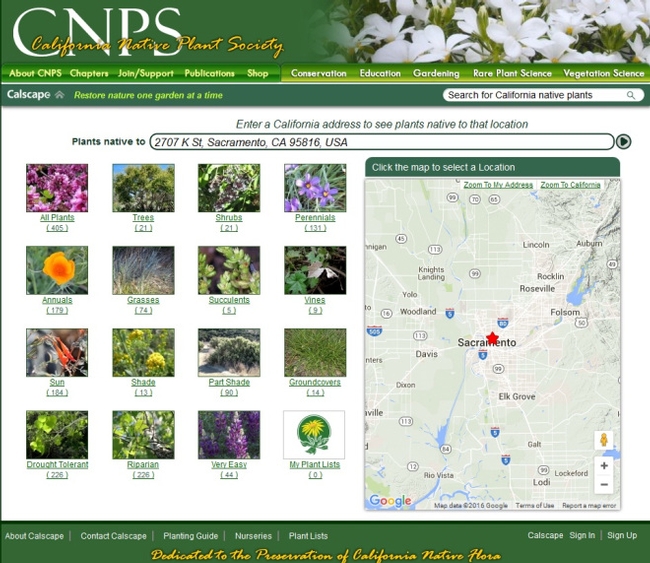
By T. Eric Nightingale, U.C. Master Gardener of Napa County
Spring is around the corner, ready to bring new opportunities to spend time in our gardens. While many of us find this thought exhilarating, some prefer to spend their time in other ways.
A large proportion of these garden avoiders are young people who view gardening as little more than a chore. Engaging children in activities that do not involve a video screen can be challenging, and no doubt many parents ask themselves whether it is worth the effort.
The benefits of gardening have been well espoused in relation to adults; the benefits to children may seem less straightforward. Perhaps the most obvious is exercise, an undeniable requirement for the young. Gardening is also a way to connect children to the natural world, a connection that brings with it a respect for the environment and our dependence on it.
Children are also naturally curious. he limitless avenues of investigation into the biology, chemistry and general function of a garden can greatly increase one's understanding of how the world works.
The act of growing food for oneself and family is an invaluable experience. Not only can this endeavor impart an appreciation for healthy food, but it can be extremely empowering. Food is one of the few true necessities in life, and children can benefit from knowing that they can be at least somewhat self-sufficient in that realm.
But how do adults make gardening fun and interesting to youngsters? As the grown-up, your first task is to find out what grows well (and quickly) in your climate and yard. A child will lose interest if plants grow too slowly or, even worse, never germinate at all.
In Napa Valley, March is a great time to plant peas and carrots, which will sprout quickly and mature in May. These vegetables are also fun to harvest and can be eaten without even cooking, adding to the excitement.
Some plants are simply more fun to grow than others. People of all ages appreciate sunflowers. The seeds are easily sown, and many varieties reach impressive heights. Birds love to eat the new seeds growing on the blooms, adding an additional chance to observe nature.
Pumpkins are another visually impressive option, growing from small seedlings to giant gourds. Some varieties are suitable for carving into jack o'lanterns; check the description on the seed packet.
Edible flowers are also sure to please young people. Pansies and violas make attractive toppings for salads or desserts, but also consider the tasty blossoms of nasturtium and borage. Just be sure that youngsters understand that only some plants, and some parts of plants, are safe to eat.
A cover crop is another option that teaches many garden lessons. Brassicas such as mustard and legumes like fava beans are inexpensive to sow and need little encouragement to grow.
Small children need help measuring to make rows and holes for sowing. They benefit from some homemade tools customized for the job. A string with knots at relevant lengths can help with spacing, and a popsicle stick with a line on it will aid in judging planting depth
The garden also holds some important lessons for older children. Pollinator decline and soil health are both important current issues that can be taught in the home garden. I have yet to meet a teenager who is uninterested in insect metamorphosis, one of the most undeniably unsettling things to witness. The interdependence of organisms within the soil ecosystem is an analog for nature as a whole, and the lessons come with an excuse to get dirty.
If you have a group of children you hope to inspire, or a classroom that needs a garden, there are resources available to you. For the past five years, a group of Napa County Master Gardeners has been dedicated to getting kids excited about plants and gardening. Known as The School Garden Task Force, this group has been helping educators around the county find the horticultural resources they need. The team was also a founding partner of the Napa Valley School Garden Network, a group of citizens who share a mission of starting a garden at every school in Napa (www.nvusd.org/nvsgn).
There are myriad resources online related to gardening with children. I have found projects of all levels of involvement and complexity.
The most important thing is, of course, to get kids into the garden. Once there, they will surely find something intriguing.
Workshop: UC Master Gardeners of Napa County will hold a workshop on “Growing Tomatoes” on Saturday, April 6, from 9:30 a.m. to 11:30 a.m. at University of California Cooperative Extension, 1710 Soscol Avenue, Napa. Join our experienced tomato growers for tips and tricks on cultivating perfect homegrown tomatoes. Learn the latest research on tomato cultivation and care and discover new and heritage tomato varieties. You'll get all the information you need to grow delicious and beautiful tomatoes in your own large or small garden or in containers. Growing America's favorite garden fruit is not only fun and easy, but also the best way to acquire healthy food for you and your family. Online registration (credit card only); Mail-in/Walk-in registration (check only or drop off cash payment).
Master Gardeners are volunteers who help the University of California reach the gardening public with home gardening information. U. C. Master Gardeners of Napa County (http:/napamg.ucanr.edu) are available to answer gardening questions in person or by phone, Monday, Wednesday and Friday, 9 a.m. to Noon, at the U. C. Cooperative Extension office, 1710 Soscol Avenue, Suite 4, Napa, 707-253-4143, or from outside City of Napa toll-free at 877-279-3065. Or e-mail your garden questions by following the guidelines on our web site. Click on Napa, then on Have Garden Questions? Find us on Facebook under UC Master Gardeners of Napa County.
by Penny Pawl, U. C. Master Gardener of Napa County
Why do sunflowers follow the sun? This mystery has been researched and hopefully solved. Recently discoveries at U.C. Davis have explained what this movement is and what causes it. The tracking was reported in the magazine Science, and it's known that the movement follows circadian rhythms.
We humans have these internal clocks as do sunflowers and other plants. The sunflower rotates as different parts of the stem change shape during the day. Once the flower is mature, it no longer moves. This movement is called heliotropism.
Sunflowers are natives to North America. There is evidence that the Native Americans of Arizona and New Mexico knew them and used them in food and food preparation 3,000 years ago.
When the Spanish arrived around 1500 AD, they sent seeds back to Europe where they were planted in gardens. By the 18th century, sunflower oil had become popular and Russian farmers were planting thousands of acres for oil.
North American farmers initially grew sunflowers as poultry feed. In 1930, Canada spearheaded the first official government-sponsored sunflower-breeding program.
Today sunflowers are grown in many countries, with Russia and Ukraine leading the way. Sunflowers are also a major crop in the U.S. When you drive to Sacramento in summer, you will see vast fields of sunflowers along Interstate 80.
Sunflowers have been developed to thrive in home gardens. If the heads are huge, as many are, they hang down. When I grow them, the birds love perching on the edge of the flower and eating the seeds. The heads are actually composed of many small flowers that produce seeds when ripe.
It's easy to grow sunflowers at home. Often birds will plant the seeds for you. There are both annual and perennial sunflowers and both types attract bees and birds.
The plant has a long tap root so if you want the “tallest in town” variety, plant directly into the soil. Sunflowers need full sun and nutrient-rich soil. They also require deep watering, especially when first planted. Be aware that they will shade plants near them so site them where that won't create a problem.
I love the many sizes and colors of modern sunflowers. U.S. breeders have done most of the hybridizing. Some varieties reach 10 feet in height, while others are small enough to use for table décor. Breeders also have come up with sunflowers that don't produce pollen.
Sunflowers with black seed are the ones harvested for oil. The seeds are edible, either by the birds or by the grower and friends.
How you plant sunflower seed is important. Choose a site that gets several hours of sun each day. Also take into account the plant's mature size. Plant giant sunflowers in the back of the bed and smaller ones near the front.
For the best results, sow seed directly in the garden soil. Transplants don't do as well. Plant seed about ½-inch deep and, depending on the size of the mature plant, about a foot apart. Tap the soil down and water well after the seed is in place and about once a week thereafter. Irregular watering will reduce the size of the flower head.
Some gardeners fertilize sunflowers regularly. I usually put them in fertile soil well-amended with compost and don't worry for the rest of the summer.
The biggest obstacle you will face is keeping critters off the seed heads. You can tie large paper bags or burlap over the flower and keep the covering in lace until the seeds are ripe.
If you want to roast the seeds, take them off the head, soak in salt water for 24 hours, dry them and then roast for 30 to 45 minutes at 300°F. Add oil or butter to your taste.
Workshop: The U. C. Master Gardeners of Napa County will present a workshop on “Growing Spring and Summer Vegetables” on Saturday, March 9, from 9:30 a.m. to 11:30 a.m., at the University of California Cooperative Extension, 1710 Soscol Avenue, Napa. Do you want nutritious, easy-to grow and utterly fresh food from your garden this spring and summer? Learn what the garden needs to successfully produce spring and summer vegetables from seeds and plant starts. In addition to growing basics and hands-on activities, this program includes watering, fertilizing and harvesting tips, with a dash of Integrated Pest Management for pest and disease control. The delight of growing your own groceries is matched only by savoring them at harvest. Online registration (credit card only); Mail-in/Walk-in registration (check only or drop off cash payment).
Workshop: The U. C. Master Gardeners of Napa County will present a workshop on “Summer Vegetables” on Sunday, March 10, from 1 p.m. to 3 p.m., at Yountville Community Center, 6516 Washington Street, Yountville. Get tips for growing your own summer vegetables. Learn some basics, get keys to success, and do hands-on activities to learn about new varieties and review old favorites. Enjoy healthy vegetables taken straight from your garden to your table. The delight of growing your own vegetables is matched by savoring them at harvest. Online registration or telephone the Parks & Recreation Department at 707-944-8712.
Master Gardeners are volunteers who help the University of California reach the gardening public with home gardening information. U. C. Master Gardeners of Napa County (http:/napamg.ucanr.edu) are available to answer gardening questions in person or by phone, Monday, Wednesday and Friday, 9 a.m. to Noon, at the U. C. Cooperative Extension office, 1710 Soscol Avenue, Suite 4, Napa, 707-253-4143, or from outside City of Napa toll-free at 877-279-3065. Or e-mail your garden questions by following the guidelines on our web site. Click on Napa, then on Have Garden Questions? Find us on Facebook under UC Master Gardeners of Napa County.

